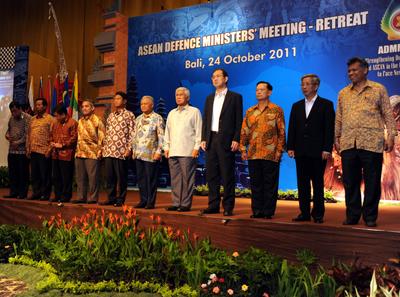Others were established following formal agreements: the top-down approach. These institutions have served well to date, but more needs to done to effect region-wide integration.
Thanks to the many initiatives undertaken by ASEAN, the pace of sub-regional integration is fastest in Southeast Asia. By contrast, Northeast Asia is hardly active, and South Asia has a number of slow-moving initiatives.
ASEAN is moving towards more integration through its community initiatives — in economic, political and security, and social and cultural fields. The grouping is also the central force in East Asian integration, which is driven by its initiatives — ASEAN+1 free trade agreements (FTAs), ASEAN+3, the East Asia Summit (ASEAN+6) and the expanded East Asia Summit (ASEAN+6 plus the US and Russia).
Asian countries have also signed many bilateral FTAs. Trans-regional cooperation promoted by APEC is important but its proposal for an Asia-Pacific FTA is a long-term target. On the other hand, trans-regional integration, albeit selectively, is moving faster through the Trans‑Pacific Partnership (TPP), partly because the US indicated this initiative is its preferred route for integration.
Besides these established institutions Asia is also seeing the emergence of a cooperation mechanism, and institutions that could be a major influence on the direction and structure of regional integration. A trilateral FTA between China, Japan and South Korea may be possible because these three countries have a very close economic and business relationship. The Greater Mekong Sub-region Economic Cooperation Program is focused on building connectivity, competitiveness and a sense of community among its member states. East Asia has tested a number of mechanisms such as the Asian Bond Markets Initiative and ASEAN Infrastructure Fund to recycle its massive savings for the benefit of the region, but success is still elusive. Another effort is the establishment of mechanisms to help the region avoid and respond better to the next crisis, namely the ASEAN+3 Macroeconomic Research Office (AMRO) and the Chiang Mai Initiative Multilateralism (CMIM).
The various integration efforts continue to serve the region well. Growth is robust and there is a reasonable degree of integration among regional economies, with increased intra-regional trade and investment. The East Asian manufacturing sector is also tightly linked by the regional production network, and East Asian countries kept their economies open during the recent crisis. Growth was able to take place because there is peace and stability.
Yet region-wide integration remains elusive because growth is still dependent on demand from outside the region and the outcome of bilateral FTAs is unclear.
More than ever, comprehensive regional integration is crucial. Without it, Asia will not be able to become the third global node of growth because it will not be able to ensure existing liberalisation commitments are implemented uniformly across the region. Comprehensive integration would also ensure the region is compatible with the global economic system.
Existing and new regional mechanisms must help Asia manage future economic and financial crises, especially if they are caused by massive capital flows that can destabilise markets and exports. Regional integration will also have to narrow the development gaps between Asian member countries.
Achieving economic integration alone is not sufficient — in the future the region needs to build an Asian community. Even the economic challenge of responding to the shifting of the centre of economic gravity to Asia has become more daunting because growth now has to come from domestic demand. A strong response from Asia requires physical connectivity. The biggest challenge is to persuade member countries to give up some of their sovereignty so that decisions can be made at the regional level for faster implementation.
Can Asian institutions produce the desired regional integration, and can they deal with the new issues facing the region? In the past, issues have determined the type and structure of integration institutions. But the recent proliferation of institutions and regional architecture for integration, and the increased complexity of emerging transnational challenges, may require different kinds of institutions and players.
But what is the best way to proceed? With so many institutions already active or planned, should Asia create new ones, strengthen existing ones or even consider consolidating some? How can Asia strike a balance between structure, flexibility and dynamism? Now is an opportune time for Asia to answer these questions and establish the best way to approach regional integration.
The ‘looseness’ of the Asian integration process has been touted as the most suitable ideology for institutions, as it can take into account the wide variety of developmental, social and political systems. But there is a growing call for structured and institutionalised integration that will accelerate progress.
Nonetheless, Asian integration is likely to continue as an agglomeration of many frameworks and agreements and not follow a ‘grand design’. In all these configurations, the most pressing question is whether Asian countries are prepared to give up some of their sovereign powers that will be vested instead in a region-wide institution.
Mahani Zainal Abidin is the Chief Executive of the Institute of Strategic and International Studies (ISIS), Malaysia.
This article appeared in the most recent edition of the East Asia Forum Quarterly, ‘Asia’s global impact‘.

